Mattress protector vs mattress topper: what's the difference and which one do I need?
Follow T3's easy guide to understand the difference between mattress protectors and mattress toppers
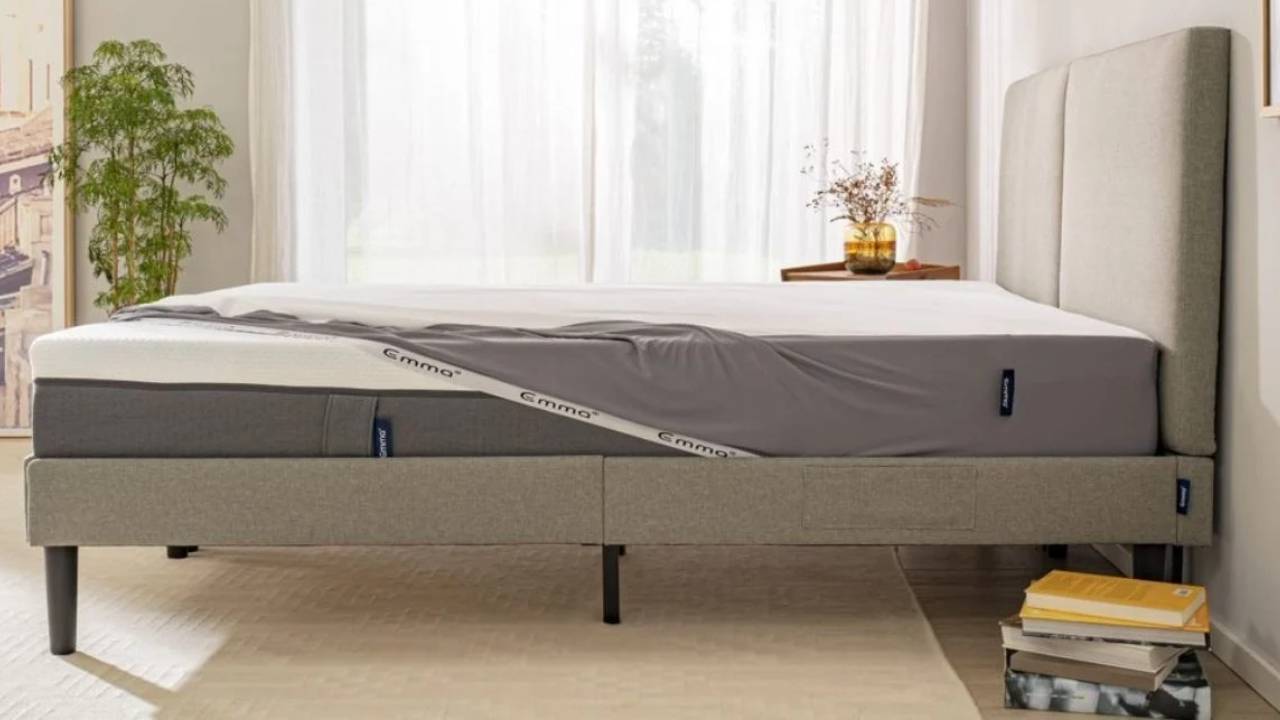
I'll tell you a secret. I've been reviewing bedding products for years now. So I've been lucky enough to sleep on some of the best mattresses money can buy. And yet, I find that even the most premium mattress isn't much cop without one of the best mattress toppers.
When I tell people this, though, they often get confused. Many aren't sure what the difference is between a mattress protector and a mattress topper, or think they're the same thing (they're not).
So what is a mattress topper, exactly? How does it differ from the best mattress protector? And should you choose one, the other, or both? Read on as I explain everything you need to know.
What is a mattress protector?
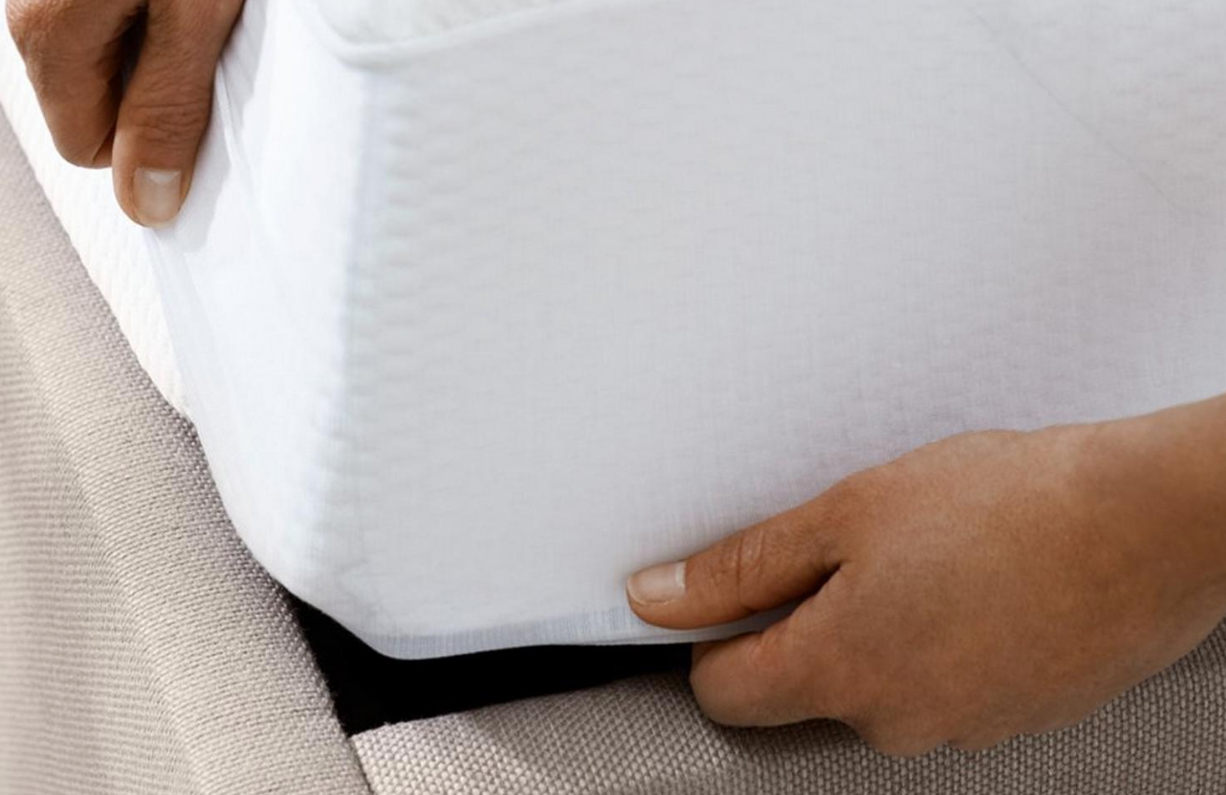
The Tempur Fit Mattress Protector
A mattress protector is a thin, removable layer that covers your mattress like a fitted sheet. Its primary purpose is exactly what the name suggests: to protect your mattress from various potential hazards.
That means most mattress protectors are waterproof or water-resistant, safeguarding against spills, sweat and other bodily fluids. They also create a protective barrier against dust mites, pet dander, bed bugs and other infestations. This way, a protector can keep your mattress clean and hygienic, and extend its life overall. So in many ways, it pays for itself.
Mattress protectors are typically made from materials such as cotton, polyester or bamboo-derived fabrics, often with a waterproof membrane. They're usually thin enough that you won't notice them under your sheets and don't alter the feel of your mattress. They're usually machine-washable.
What is a mattress topper?
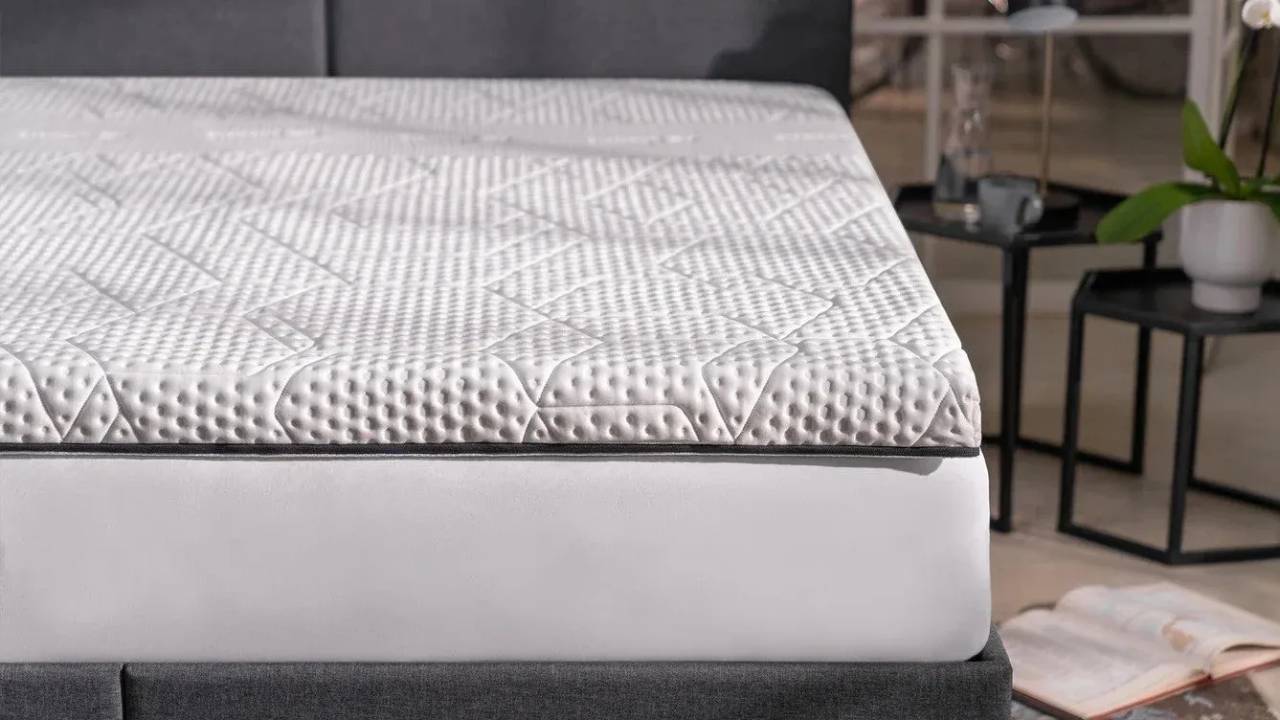
Emma Diamond Degree Topper
A mattress topper, in contrast, is all about comfort. It's much thicker than a mattress protector: usually somewhere between 1 and 4 inches deep. And you place it on top of your mattress to modify its comfort level.
Get all the latest news, reviews, deals and buying guides on gorgeous tech, home and active products from the T3 experts
It can do this in a variety of ways. For instance, it can make a too-firm mattress softer, or add support to a mattress that's overly soft. It can provide additional pressure relief and contouring. Some mattress toppers are also designed with cooling properties to help hot sleepers.
Though it doesn't do the same job as a mattress protector, a mattress topper does offer some degree of protection by default. Most obviously, by taking on some of the wear and tear, it can help your mattress last longer.
Mattress toppers come in various materials, including memory foam, latex, down, wool and polyfoam. Each offers different benefits in terms of support, pressure relief and temperature regulation.
On the whole, mattress toppers are usually more expensive than mattress toppers. Also, while most protectors are machine washable, toppers often require spot cleaning or professional cleaning. And remember that adding a topper will increase your mattress height, potentially requiring deep-pocketed sheets.
How to choose: mattress topper or mattress protector?
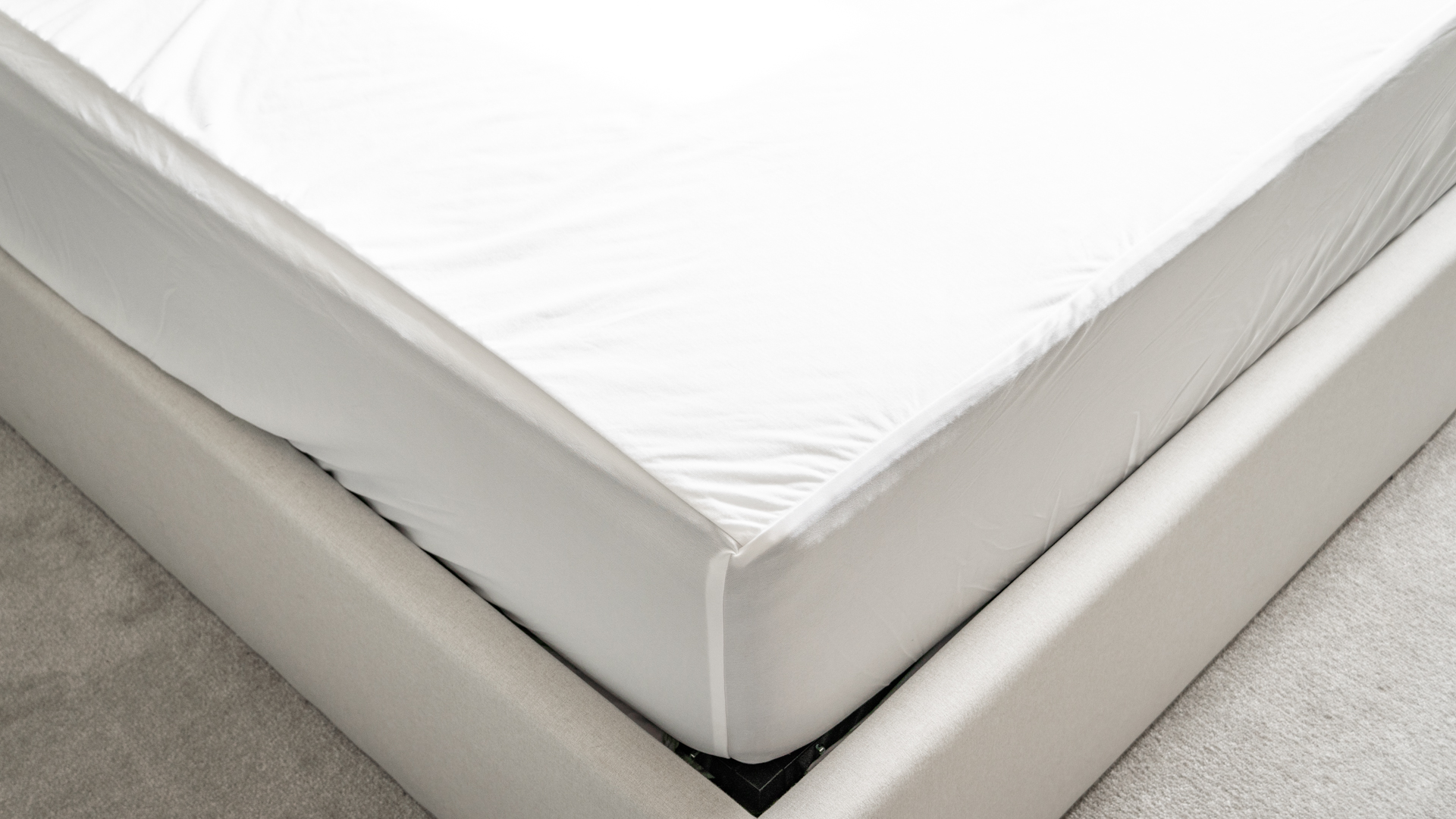
REM-fit Tencel Cool mattress protector
The next question you may have is: "How do I choose between a mattress protector and a mattress topper?" Our simple answer is: don't. Buy both. They both do different jobs for a relatively small amount of money (certainly compared to the cost of an expensive mattress). So both, in their different ways, offer excellent value.
Using both a mattress protector and a topper basically provides the best of both worlds. You would normally place the mattress topper directly on your mattress, cover both the mattress and topper with the protector, and then add your fitted sheet and other bedding on top. This allows you to enjoy the comfort benefits of the topper while still protecting both the topper and the underlying mattress from spills, stains, and allergens.
That said, if you're short on funds and must choose between a mattress protector and mattress topper, opt for a mattress protector. Ultimately, mattress toppers are more of a luxury item. In comparison, a mattress protector is an affordable investment that preserves your mattress and so it offers better value when funds are limited.
How to choose a mattress topper
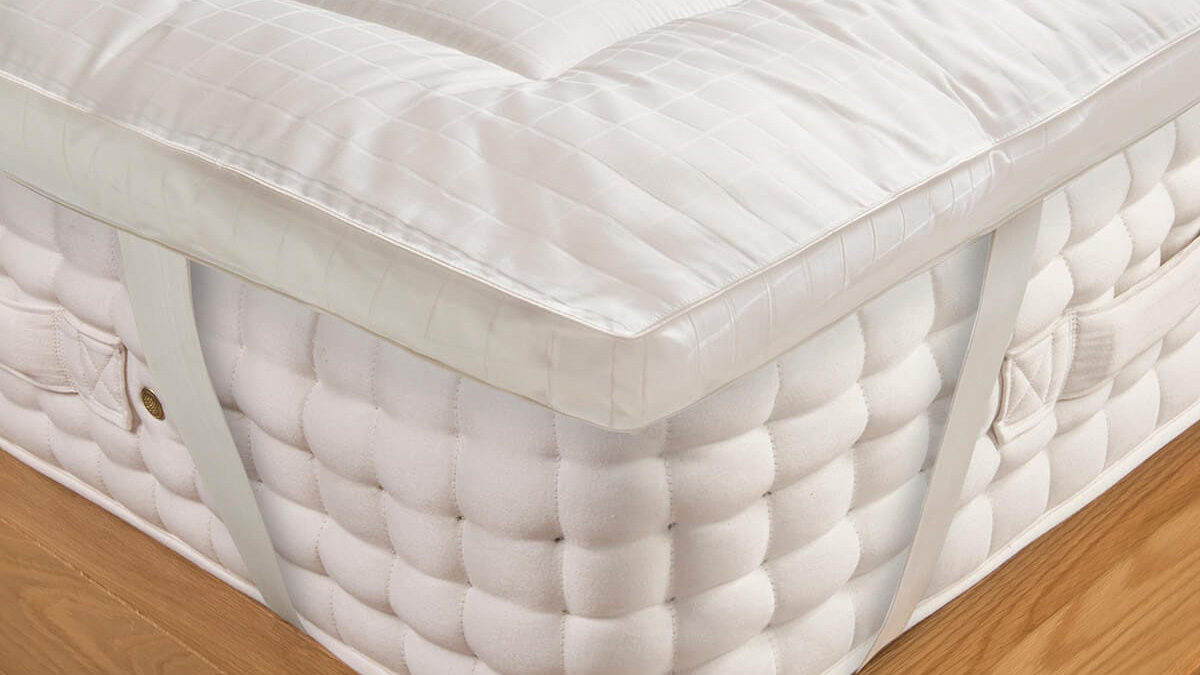
Soak&Sleep Soft as Down Silk mattress topper
To choose the right mattress topper, it's crucial to understanding your specific sleep style and needs. Firstly, take the firmness of your existing mattress into account. Does it need to be made softer or firmer? In thinking about this, consider your sleep position. Side sleepers often benefit from softer toppers, while back and stomach sleepers usually prefer firmer ones.
If you have allergies, opt for hypoallergenic materials like bamboo, wool, or synthetic fibers. Temperature regulation is another factor to consider, with some toppers featuring materials like gel-infused memory foam.
Also think about materials more broadly. Memory foam contours to the body well, but can retain heat. Latex provides support, breathability and durability. Feather and down offer a luxurious feel but may not suit allergy sufferers. Wool is naturally breathable and temperature-regulating. Polyester is affordable but can lack comfort and durability.
Other crucial factors include the topper's thickness, care instructions and budget. Thicker toppers generally offer more cushioning but can increase bed height and mean you need new bed sheets.
How to choose a mattress protector
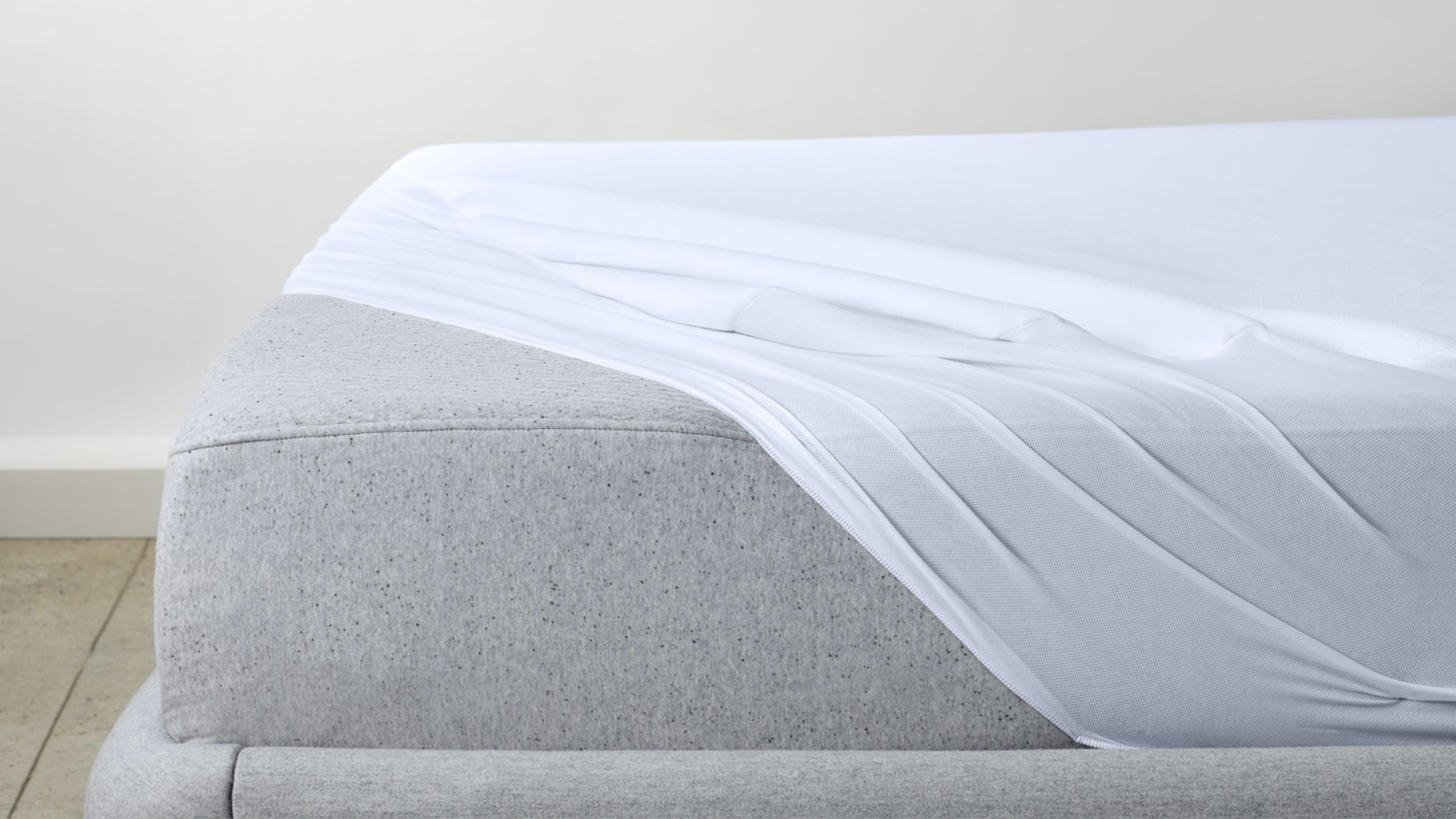
Casper mattress protector
When selecting a mattress protector, there are several to take into account. First of all, check the dimensions carefully to find a protector that matches your mattress size precisely. Secondly, make sure the product is waterproof (i.e. it provides complete shielding against spills and accidents) rather than water-resistant (i.e. it repels liquids but doesn't offer total impermeability.)
Thirdly, consider materials. Cotton is soft and breathable but isn't always as as durable as synthetic alternatives. Polyester is affordable, hypoallergenic and sturdy, though it can be less breathable. Bamboo offers breathability, moisture-wicking and antimicrobial benefits. Other materials like Tencel or organic cotton cater to specific needs and preferences.
Fourthly, think about how easy it'll be to clean. Most mattress toppers aren't machine-washable, but they may at least have removable covers that are. Finally, look for features such as hypoallergenic properties, added cushioning and/or cooling technology, depending on your specific needs.

Tom May is a freelance writer and author of the book, Great Ted Talks: Creativity. He has been editor of Professional Photography magazine, associate editor at Creative Bloq, and deputy editor at net magazine. He has also worked for a wide range of mainstream titles including Radio Times, NME, Heat, Company and Bella.
